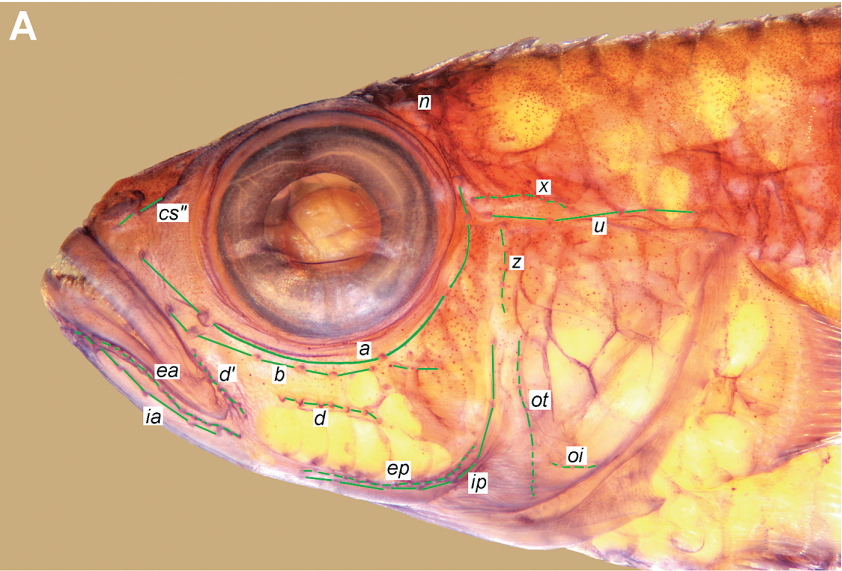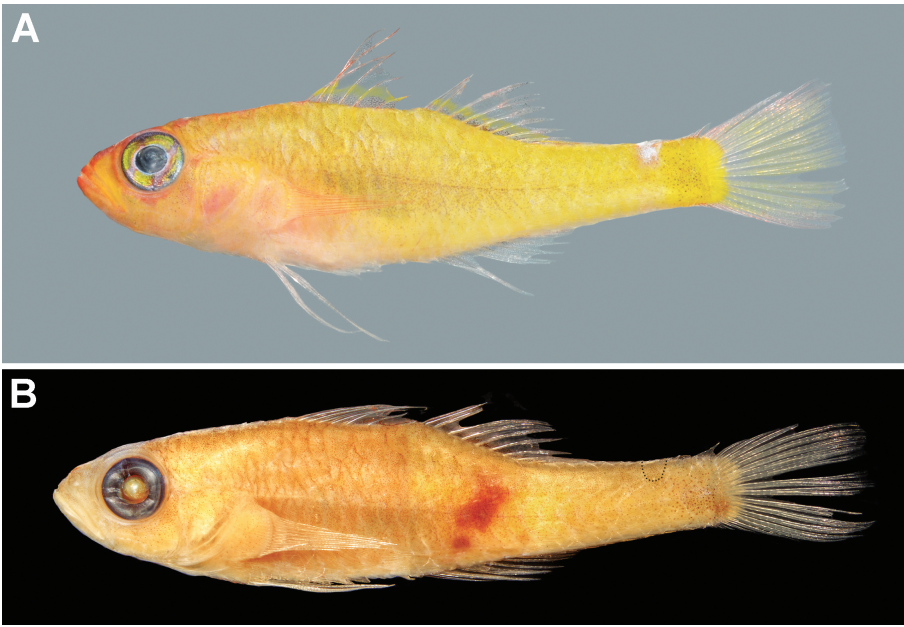A new species of pygmygoby has been described from deep reefs in the Western Pacific. Named Trimma citrum, it’s been described from a single male specimen collected 380 feet (116m) down on the west coast of Tutuba Island, on the South East tip of Espiritu Santo Island, Vanuatu. Like other pygmygobies it’s tiny at just 1.15″ (29.3mm,) long, and its common name, Lemon pygmygoby, and its scientific name “citrum,” both reference its lemon body coloration in life.
Members of the Trimma genus are small, usually colorful gobies coming primarily from reefs in the Indo-Pacific. The genus currently contains 108 valid species, but the continued exploration of deep coral reefs, known as mesophotic reefs, has revealed many fish species previously unknown to science.
Trimma citrum is described by Richard Winterbottom and Richard Pyle in the Journal of the Ocean Science Foundation. The most recently described Trimma species before this was also collected from mesophotic reefs, more than 295 feet (90m,) deep, at Palau. This singular Trimma citrum’s habitat was a limestone rock and rubble slope with scattered patches of sand and small holes, crevices, and caves, with some scattered scleractinian, gorgonian and soft corals, according to its authors. The water was clear, with low to moderate currents and no other individuals were seen alive prior to capture.
Although a predominantly yellow coloration of the body is present in several species of Trimma, only two other species are lemon yellow on both the head and the body. The new species differs from Trimma taylori and T.winchi by the half-pupil diameter and white saddle across the dorsal caudal peduncle. It further differs from T. taylori in having fewer dorsal and anal-fin rays, no branched pectoral-fin rays more scales in the predorsal midline, and more gill rakers.




